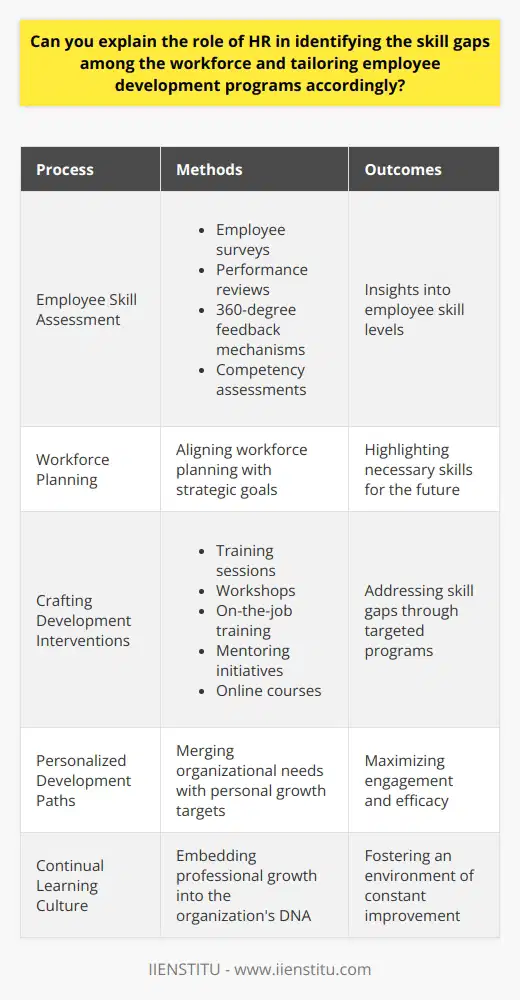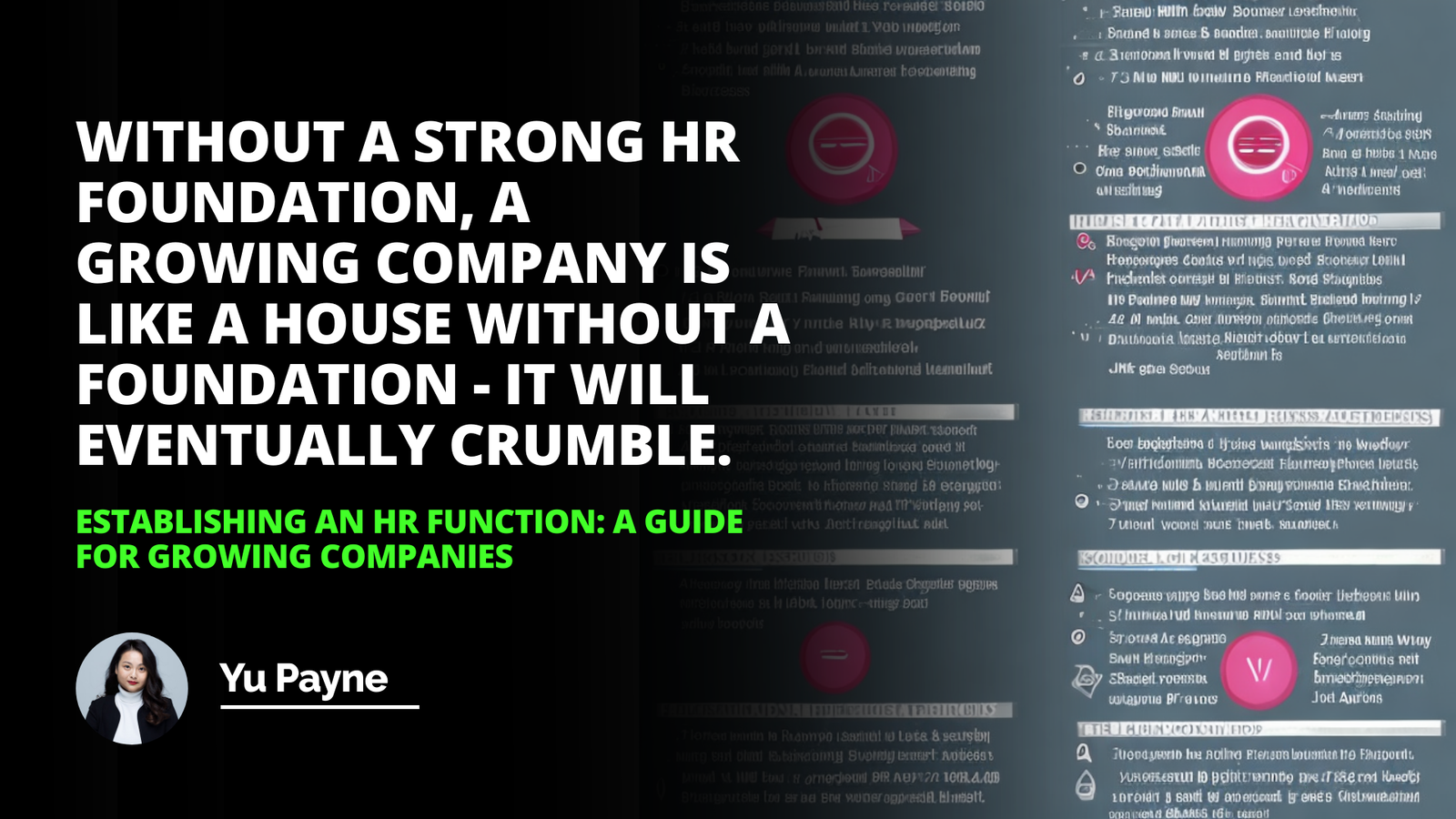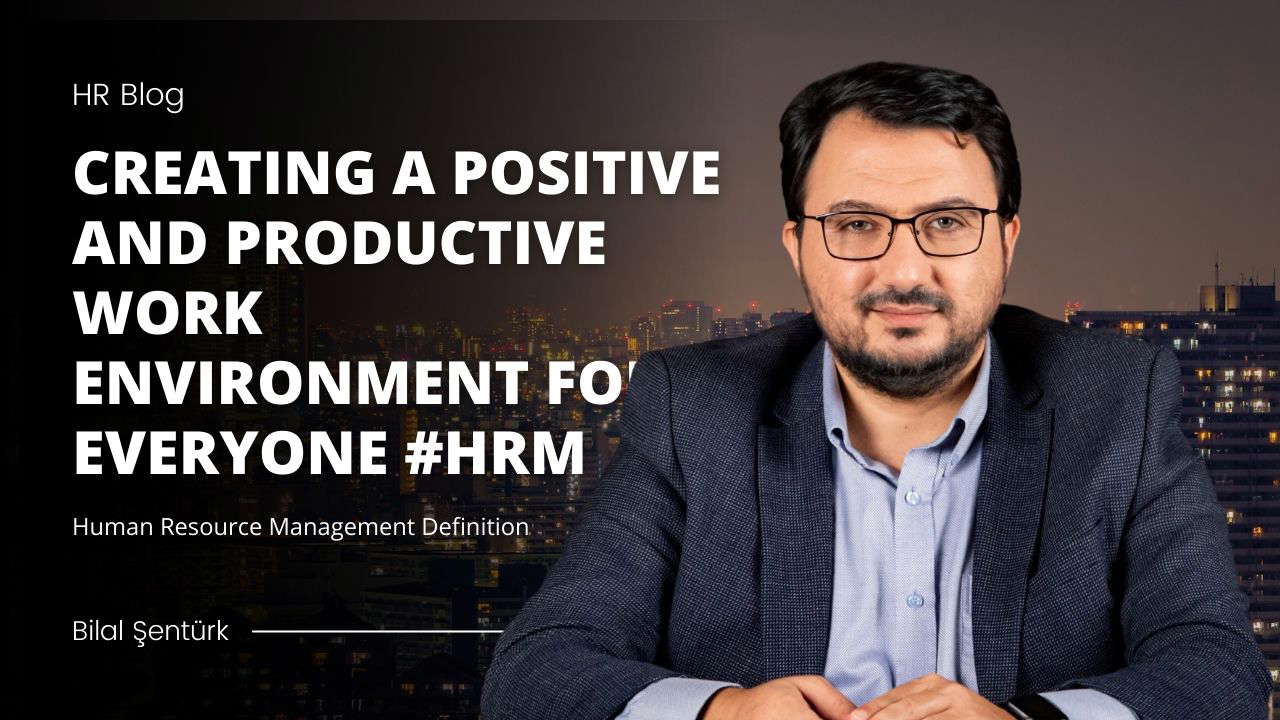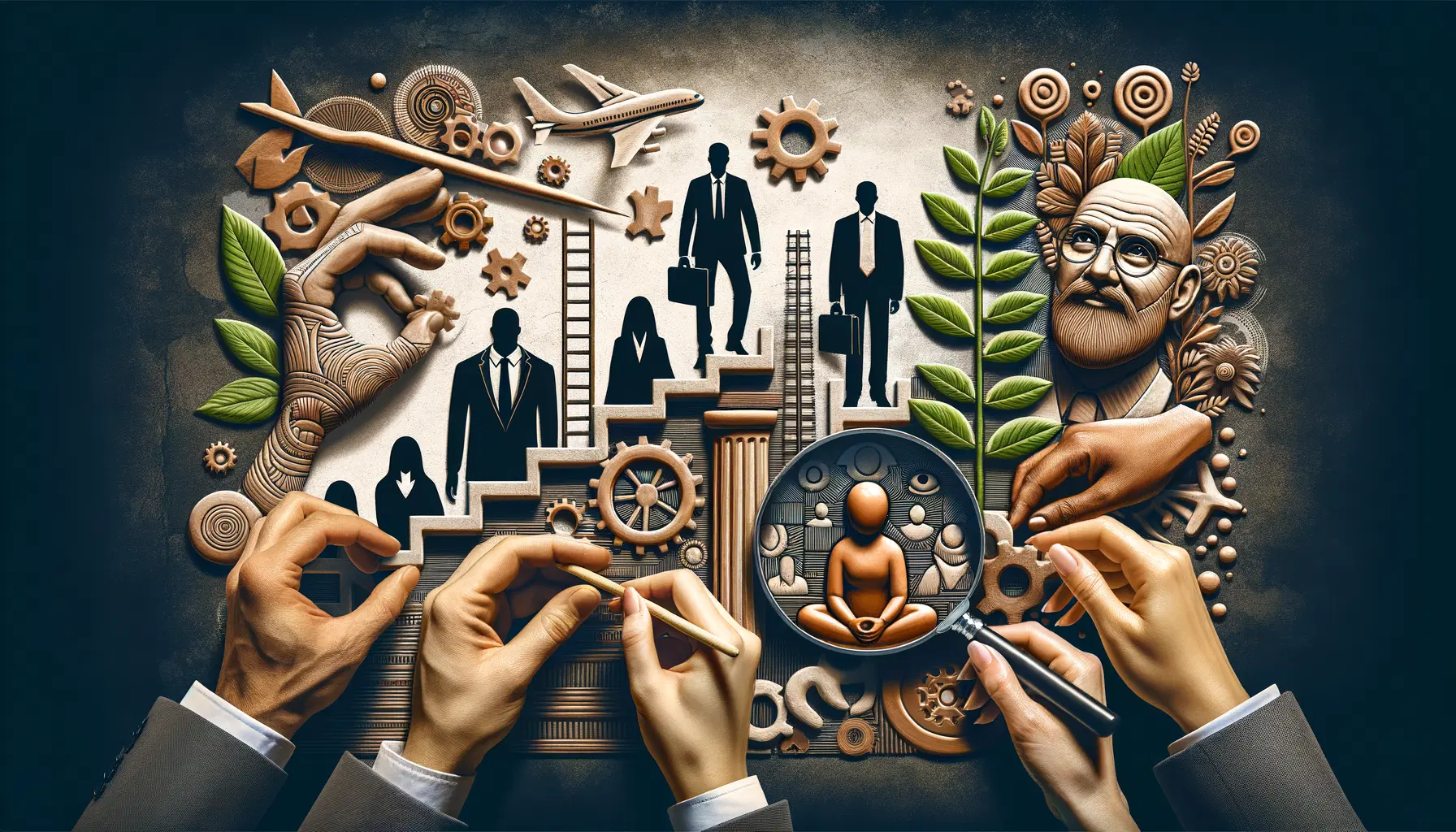
In today's competitive business landscape, where new challenges emerge daily, organizations constantly seek innovative methods to maintain a dynamic, skilled, and motivated workforce. I remember the first time I experienced a comprehensive employee development program in my own workplace. It was eye-opening—seeing how the focus on growth and learning not only improved my own skills but created a sense of belonging among colleagues. This sense of being valued is exactly what HR employee development programs aim to foster. These programs are not just about job training; they are about investing in people, building up confidence, and preparing the team for future challenges.
At the heart of this effort lies the crucial role played by HR employee development programs. These initiatives have become indispensable tools for nurturing talent, improving job performance, and ensuring that employees possess the knowledge and abilities necessary to meet current and future demands. Think about it this way: when you nurture a plant, you don’t just water it once and leave it. You ensure it gets enough sunlight, water, and sometimes even a little pep talk! Employee development programs work the same way. They provide continuous support, ensuring that each team member grows strong and thrives in their role.
Essential Features of Effective HR Employee Development Programs
Creating effective HR employee development programs requires a strategic approach that aligns with organizational goals and addresses the unique needs of its workforce. A well-crafted program should focus not only on enhancing current skills but also on preparing employees for future challenges. Below, we explore the instrumental features that underpin successful development programs in human resources.
Learning and Development Opportunities
At the core of any HR employee development initiative is the provision of diverse learning and development opportunities. Picture this: you join a new company, eager to contribute, but the last time you attended a training session was years ago. Without continuous learning, it’s like being handed a map but with no idea how to read it. Training workshops, seminars, e-learning modules, and on-the-job training represent various formats these programs can take. In my experience, e-learning modules became my go-to during hectic weeks because I could learn at my own pace, sometimes even while enjoying a cup of coffee on a Sunday morning.
Continuous learning is vital in a rapidly evolving workplace; without it, employees risk falling behind in industry trends and emerging technologies. Additionally, development programs should cater to different learning styles and offer flexible solutions that enable employees to learn at their own pace and convenience. For example, a friend of mine, a visual learner, thrived in a company that offered interactive video-based training sessions, while another colleague found their groove in reading comprehensive industry whitepapers. This flexibility ensures that learning is not a one-size-fits-all approach.
The vitality of continuous learning within the workforce cannot be understated. By fostering an environment where employees are encouraged to expand their horizons and skill sets, organizations can ensure that their teams remain competent and versatile. Engaging employees through professional development can also lead to increased job satisfaction and a greater sense of loyalty to the company. I’ve seen this first-hand when colleagues, previously disinterested, began engaging more enthusiastically after a particularly insightful workshop on effective communication.
Succession Planning
Understanding the importance of future leadership planning is an absolute necessity for any forward-thinking business. By implementing effective succession planning strategies, organizations can identify and prepare future leaders from within their ranks, ensuring a seamless transition when senior employees retire or move on. One of my past managers shared how succession planning helped her step up when a department head suddenly left. Thanks to the mentorship and training she'd received over the years, she was able to take over the reins without the usual hiccups.
To implement effective succession planning, HR must assess the current talent pool and identify potential leaders early in their careers. This entails providing them with the necessary training and experiences to grow into their future roles. This proactive approach not only prepares employees for leadership positions but also serves to reassure stakeholders that the company is well-positioned to maintain stability and direction for years to come.
Three Key Steps for Effective Succession Planning:
Identify High-Potential Employees: Conduct regular assessments to spot individuals who show promise.
Provide Tailored Mentorship: Match these employees with mentors who can guide their growth.
Monitor Progress: Track their development over time and adjust training programs as needed.
Benefits of HR Employee Development Programs
HR employee development programs are not merely a means to enhance the individual skills of employees; they are also a significant contributor to the overall health and growth of an organization. Let us delve into the multifaceted benefits that these programs confer on companies that choose to invest in them.
Increased Employee Engagement
The relationship between employee development programs and the engagement level of a workforce is symbiotic. When employees see that their company is investing in their growth, they often feel a stronger affiliation to the organization, and in turn, are more willing to invest their time and efforts into their job roles. Engaged employees are typically more productive, have better job performance, and contribute positively to the company culture. It’s like when I participated in a leadership development program—suddenly, my role wasn’t just a job, but a career path with opportunities and possibilities.
Examples of Employee Engagement Leading to Business Growth:
When development programs align with employees' career aspirations, they can lead to increased innovation.
Enhanced customer satisfaction often follows as employees feel more confident in their skills.
Business profitability tends to rise as a direct result of a more motivated and skilled workforce.
Engaged employees often become the best ambassadors for a company, attracting new talent and improving the organization's reputation in the market. I remember chatting with a friend who, after participating in an HR-led mentorship program, couldn’t stop raving about her company. That kind of authentic enthusiasm is a recruiter’s dream!
Retention of Top Talent
One of the significant benefits of development programs is their ability to act as a retention tool for top-performing employees. Top talent seeks opportunities to grow and challenge themselves, and such programs fulfill this need. In contrast, the lack of development opportunities is frequently cited as a reason for employee turnover. I recall a colleague who left a previous role due to stagnation, only to find new energy at a company that prioritized regular skill-building workshops. It wasn't about the pay—it was about the growth.
Moreover, the impact of turnover rates is significant on organizational performance. High turnover can lead to increased recruitment costs, loss of internal knowledge, and a disruption in team dynamics. By offering comprehensive development programs, organizations can retain their best employees, thereby avoiding the costs and disruptions associated with replacing key personnel. Imagine trying to replace a seasoned project manager with a new hire who needs months of training—it’s not only time-consuming but can hurt productivity.
Role of HR in Implementing Effective Employee Development Programs
The HR department is the linchpin in structuring and ensuring the successful implementation of employee development programs. Their strategic role in these initiatives can significantly influence an organization’s ability to achieve its goals and remain competitive.
Identifying Learning Needs
One primary role of HR in the realm of employee development is the identification of learning gaps and opportunities within the organization. This process usually involves conducting skills assessments, performance appraisals, and considering future strategic direction to pinpoint areas where employees could benefit from further development. Think of it like a teacher assessing students before a new semester—they need to know who needs extra help in math and who’s ready for advanced literature.
Successful learning needs assessments can lead to tailored programs that address specific skills deficits or prepare employees for upcoming challenges. Case studies of successful assessments often highlight the improved job performance and readiness of employees to tackle new roles, underscoring the value of these HR initiatives. For those interested, The Fifth Discipline by Peter Senge offers a profound understanding of how learning organizations operate, and it's a great read if you're delving deeper into the subject.
Partnering with External Vendors
Sometimes, the most efficient or effective way to deliver training is through external vendors, especially for specialized knowledge or certification programs. HR departments often have to weigh the pros and cons of such partnerships. By collaborating with reputable trainers or institutions, they can offer high-quality HR certification courses and innovative online courses with certificates. When I was seeking to enhance my digital marketing skills, the HR department arranged an external training session with an industry leader, which was far more insightful than any internal workshop we’d had.
Challenges in Partnering with External Vendors:
Ensuring training is tailored to the specific needs of the organization.
Verifying that the quality of the training meets the company's standards.
Balancing costs against the anticipated benefits.
Building relationships with external vendors does come with its challenges, but the opportunity to tap into specialized expertise and resources often justifies the effort involved in such partnerships. For example, LinkedIn Learning offers courses that many HR departments utilize to keep employees updated on the latest industry trends.
Current Trends in HR Employee Development Programs
As workplaces and technologies evolve, so too do the methods and mediums through which employee development is delivered. Let’s look at the current trends shaping the way organizations train and develop their workforce.
Microlearning
The concept of microlearning has gained significant traction in recent years. This method involves delivering content in small, specific bursts that are easy to understand and retain. The importance of bite-sized learning in today’s fast-paced work environment cannot be underestimated, as it complements the lessening attention spans and busy schedules of the modern workforce. I personally found microlearning invaluable when trying to squeeze in quick lessons during lunch breaks. It felt like I was consistently growing without sacrificing my workflow.
Digital Learning Platforms
Technological advancements have significantly changed the face of employee development, introducing a myriad of digital learning platforms that offer flexibility and accessibility. These platforms can range from sophisticated Learning Management Systems (LMS) to mobile applications, providing on-the-go learning experiences that can be tailored to individual needs.
Popular digital learning platforms boast interactive features, tracking capabilities, and a wide range of topics that cater to diverse learning objectives. The features provided by these platforms can enhance the learning experience by making it more engaging and measurable. For instance, when I was working on my project management skills, I used an LMS that allowed me to track my progress and even connect with peers for group study sessions.
In conclusion, HR employee development programs are a fundamental component of a successful organization's strategy. These programs not only increase the skill level and efficiency of the workforce but also enhance employee engagement, reduce turnover, and prepare future leaders. The role of HR is central to identifying the needs, implementing the right strategies, and measuring the effectiveness of these programs. With the ongoing evolution of workplace learning trends, organizations must remain adaptable and innovative to keep pace with the changing demands of their industries.
The future scope of HR employee development programs is bound to be driven by constant technological improvements and a deeper understanding of employee engagement dynamics. Organizations that can seamlessly incorporate these elements into their development strategies are well-positioned to harness the full potential of their human capital.
References
Senge, P. M. (2006). The Fifth Discipline: The Art and Practice of the Learning Organization. Random House.
"The Importance of Continuous Learning in the Workplace." Harvard Business Review. Available at: hbr.org
"Microlearning in Corporate Training: Benefits and Best Practices." Training Industry. Available at: trainingindustry.com
Frequently Asked Questions
What are the primary benefits for organizations in implementing HR employee development programs?
Organizations face a dynamic and competitive business landscape. Ensuring a competent workforce is critical. Employee development programs serve this need. They provide numerous advantages to organizations.
Boosts Employee Performance
Employee development enhances skills and knowledge. Employees grow more efficient and productive. This performance boost directly impacts organizational success.
Attracts and Retains Talent
Top talent gravitates towards growth opportunities. Development programs provide these opportunities. They signal the organization's investment in personnel growth. Employee retention thus improves. Turnover costs decrease.
Fosters Employee Engagement
Engaged employees exhibit higher performance. Development programs keep employees motivated. They feel valued. Their commitment strengthens. This drives overall organizational performance.
Encourages Succession Planning
Leadership gaps jeopardize organizational stability. Development programs prepare future leaders. They ensure a ready talent pool. This streamlines transitions and maintains continuity.
Enhances Organizational Reputation
An organization committed to development gains a positive reputation. It becomes more attractive to potential employees. Clients and customers also view these organizations favorably.
Encourages Innovation
Developed employees bring new ideas. They apply updated skills and knowledge. This encourages innovation. Innovation keeps organizations competitive.
Supports Organizational Change
Organizations must adapt to survive. Employee development programs ease this adaptation. They equip employees with the skills necessary to embrace change.
Reduces Employee Stress
Investment in employee growth shows care. It reduces employee anxiety over skills obsolescence. This can lead to a more harmonious workplace.
Adapts to Industry Changes
Industries evolve rapidly. Development programs help organizations keep pace. They enable quick adaptation to new technologies and methods.
Provokes a Learning Culture
A learning culture fosters continuous improvement. Development programs encourage a growth mindset. This can lead to widespread excellence within the organization.
In conclusion
Employee development is crucial for organizational success. It offers a strategic advantage. Organizations must invest in their workforce. This investment yields a resilient and thriving workplace.
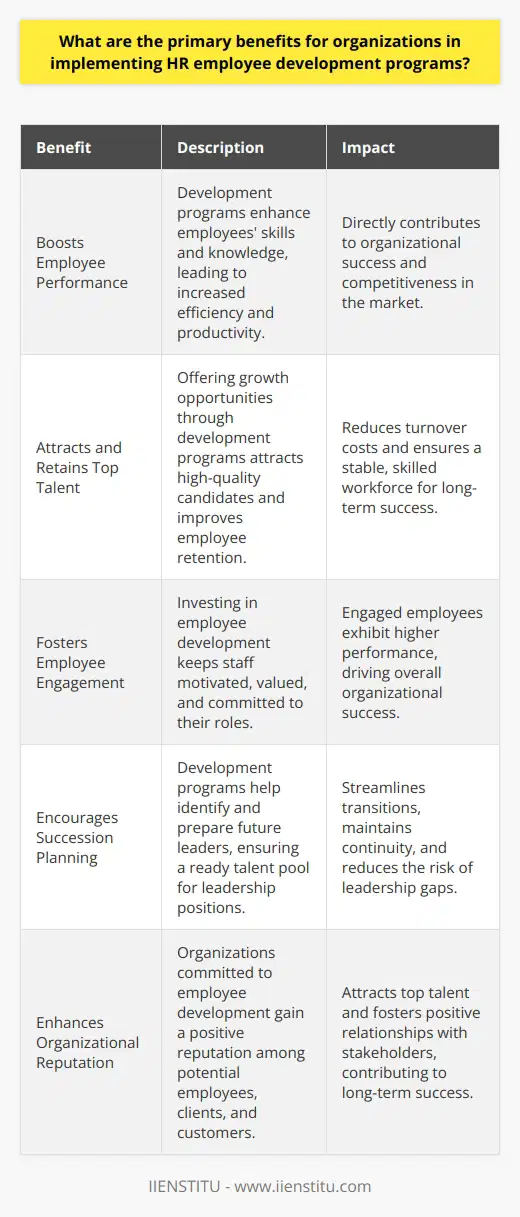
How does an organization measure the effectiveness and impact of HR employee development programs on overall productivity and performance?
Measuring HR Employee Development Programs
Organizations often invest considerable resources in human resource development programs. These programs aim to enhance skills, knowledge, and efficacy among employees. To ensure a return on investment, companies must gauge these programs' effectiveness. The impact on overall productivity and performance becomes the measure of success.
Set Clear Objectives
Before measuring impact, organizations must set clear development objectives. Goals should align with the overall strategic plan. Credible metrics come from well-defined outcomes. Valid assessment becomes possible with precise targets in mind.
Use Quantitative Metrics
Performance indicators are essential for measurement. Productivity levels pre- and post-training provide insight. Other metrics include:
- Error rates: Lower error rates indicate improved skills.
- Sales figures: Increases can reflect superior selling techniques.
- Output quality: Better quality suggests enhanced workmanship.
Collecting this data allows organizations to benchmark against past performance.
Employ Qualitative Analyses
Feedback provides another layer of evaluation. Surveys, interviews, and focus groups can reveal:
- Employee satisfaction: Happy workers often perform better.
- Improvement in communication: Better interaction can lead to productivity gains.
Reflecting on subjective experiences offers a nuanced understanding of impact.
Track Progress Over Time
Single assessments give snapshots. Longitudinal studies provide comprehensive pictures. Observe performance trends to see if gains sustain over time. Continuous monitoring helps identify the lasting effects of development efforts.
Calculate Return on Investment (ROI)
ROI analysis is critical. It weighs program costs against financial benefits. Organizations seek positive ROI as a clear indicator of program success. A high ROI signals an effective development program.
Examine Promotion Rates
Career advancement reflects development effectiveness. Tracking promotions shows the practical application of new skills. Organizations expect development to prime employees for higher roles.
Assess Turnover Rates
Retention rates tie to employee development quality. High turnover suggests dissatisfaction or ineffectiveness. Low turnover indicates a content and well-developed workforce.
Review Customer Satisfaction
External feedback serves as an indirect metric. Enhanced employee skills should translate to better customer service. High customer satisfaction scores often point to successful employee development.
Look for Innovations
Innovation suggests dynamic learning and application. If development leads to new processes or products, it likely affects overall performance positively.
Implement Control Groups
Comparison with non-participants can isolate effects. Control groups allow for clearer attribution of changes in productivity.
Conclusion
Organizations must blend various methods to measure impact effectively. Reliance on one metric alone may not present the full picture. Combining quantitative and qualitative data yields richer evaluation. Regular assessment encourages ongoing improvement in development programs. Ultimately, diligent measurement affirms the value of investing in HR employee development.
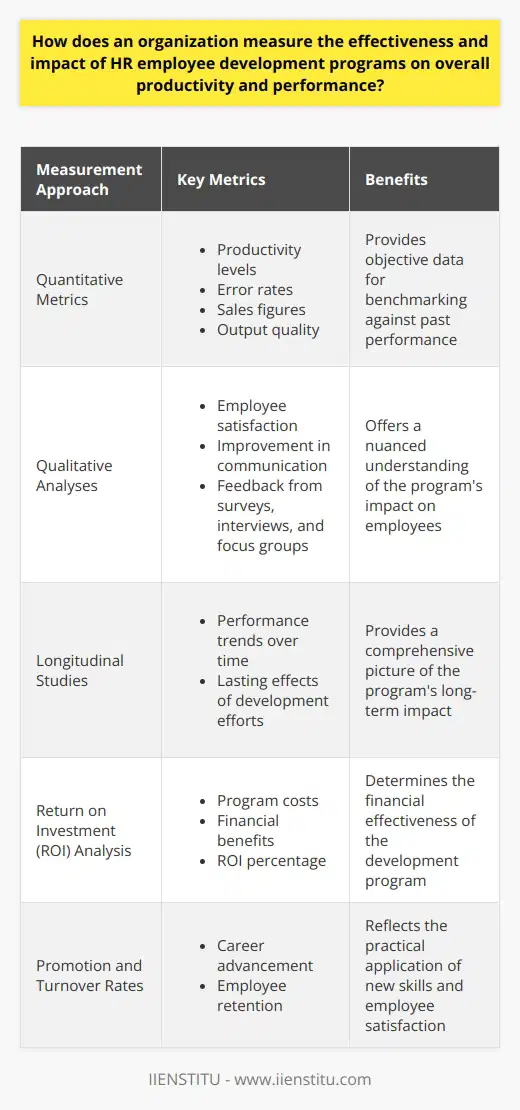
Can you explain the role of HR in identifying the skill gaps among the workforce and tailoring employee development programs accordingly?
The Role of HR in Skill Gap Identification
Human Resources (HR) functions pivotally in the modern workplace. It identifies skill gaps within an organization’s workforce. This pinpointing serves as a prelude to tailored employee development.
Employee Skill Assessment
HR assesses skills and competencies routinely. It scans the workforce to detect proficiencies and deficiencies. Integral to this process are performance evaluations. Such assessments measure current employee capabilities against expected standards. HR utilizes various tools for this task, including:
- Employee surveys
- Performance reviews
- 360-degree feedback mechanisms
- Competency assessments
Through these methods, HR gains insights into employee skill levels.
Workforce Planning
HR anticipates future trends and organizational needs. It aligns workforce planning with strategic goals, highlighting necessary skills for the journey ahead. This foresight requires a deep understanding of industry developments. The HR department works closely with management and department heads. It integrates their insights into planning efforts.
Crafting Development Interventions
Once HR spots skill gaps, it moves to action. HR formulates specific development programs to address these voids. These include:
- Training sessions
- Workshops
- On-the-job training
- Mentoring initiatives
- Online courses
The design of these programs reflects the unique gaps identified. They often offer a mix of hard and soft skills training.
Personalized Development Paths
Employees benefit from personalized development plans. HR ensures that programs fit individual learning styles and career aspirations. It merges organizational needs with personal growth targets. This approach maximizes engagement and efficacy.
Continual Learning Culture
HR champions a culture of continual learning. It embeds professional growth into the organization's DNA. Lifelong learning opportunities underscore this culture. HR encourages employees to seek constant improvement. It fosters an environment where skill advancement is not just encouraged but expected.
Measuring Program Effectiveness
Evaluating the impact of development programs is crucial. HR measures improvements and adjusts strategies accordingly. Regular feedback loops with participants guide this process. They allow HR to refine offerings for greater impact.
Fostering Collaboration Across Departments
HR acts as a bridge between different organizational segments. It ensures skills development aligns with cross-functional needs.
Encouraging Leadership Support
Lastly, HR touts management buy-in for employee development. Support from the top magnifies program success. Leaders play a pivotal role in championing growth initiatives. HR must secure their endorsement to ensure smooth implementation.
Human Resources fulfills a vital role in addressing workforce skill gaps. It identifies, plans, and executes development strategies. In doing so, HR ensures that employees and organizations can adapt and thrive in an ever-evolving business landscape.
